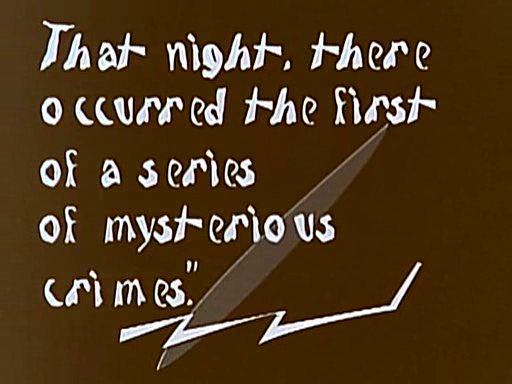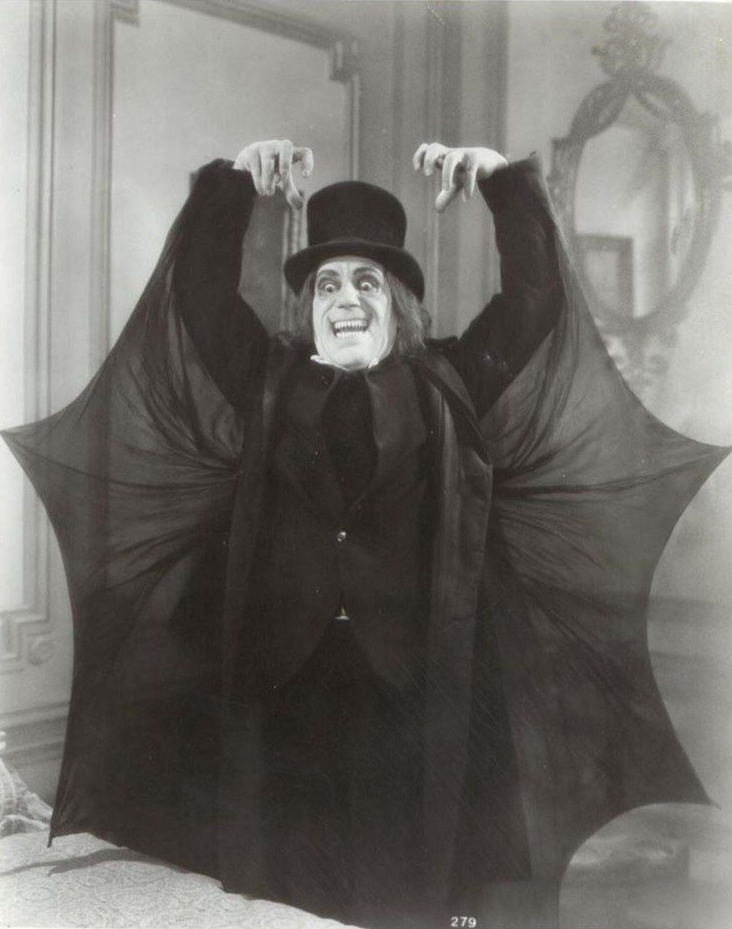|
Der Golem, Wie Er In Die Welt Kam
''The Golem: How He Came into the World'' (german: link=no, Der Golem, wie er in die Welt kam, also referred to as ''Der Golem'') is a 1920 German silent horror film and a leading example of early German Expressionism. Director Paul Wegener, who co-directed the film with Carl Boese and co-wrote the script with Henrik Galeen based on Gustav Meyrink's 1915 novel, stars as the titular creature, a being in Jewish folklore created from clay. Photographer Karl Freund went on to work on the 1930s classic Universal horror films years later in Hollywood. ''The Golem: How He Came into the World'' is the third of three films that Wegener made featuring the golem, the other two being '' The Golem'' (1915) and the short comedy ''The Golem and the Dancing Girl'' (1917), in which Wegener dons the golem make-up in order to frighten a young lady with whom he is infatuated. ''The Golem: How He Came into the World'' is a prequel to ''The Golem'' from 1915 and, as the only one of the three fil ... [...More Info...] [...Related Items...] OR: [Wikipedia] [Google] [Baidu] |
Paul Wegener
Paul Wegener (11 December 1874 – 13 September 1948) was a German actor, writer, and film director known for his pioneering role in German expressionist cinema. Acting career At the age of 20, Wegener decided to end his law studies and concentrate on acting, touring the provinces before joining Max Reinhardt's acting troupe in 1906. In 1912, he turned to the new medium of motion pictures and appeared in the 1913 version of '' The Student of Prague''. It was while making this film that he first heard the old Jewish legend of the Golem and proceeded to adapt the story to film, co-directing and co-writing the script with Henrik Galeen. His first version of the tale '' The Golem'' (1915, now lost) was a success and firmly established Wegener's reputation. In 1917, he made a parody of the story called ''Der Golem und die Tänzerin'', but it was his reworking of the tale, '' The Golem: How He Came into the World'' (1920) which stands as one of the classics of German cinema and help ... [...More Info...] [...Related Items...] OR: [Wikipedia] [Google] [Baidu] |
Intertitle
In films, an intertitle, also known as a title card, is a piece of filmed, printed text edited into the midst of (i.e., ''inter-'') the photographed action at various points. Intertitles used to convey character dialogue are referred to as "dialogue intertitles", and those used to provide related descriptive/narrative material are referred to as "expository intertitles". In modern usage, the terms refer to similar text and logo material inserted at or near the start or end of films and television shows. Silent film era In this era intertitles were mostly called "subtitles" and often had Art Deco motifs. They were a mainstay of silent films once the films became of sufficient length and detail to necessitate dialogue or narration to make sense of the enacted or documented events. ''The British Film Catalogue'' credits the 1898 film ''Our New General Servant'' by Robert W. Paul as the first British film to use intertitles. Film scholar Kamilla Elliott identifies another early use of ... [...More Info...] [...Related Items...] OR: [Wikipedia] [Google] [Baidu] |
Ahasuerus
Ahasuerus ( ; , commonly ''Achashverosh'';; fa, اخشورش, Axšoreš; fa, label=New Persian, خشایار, Xašāyār; grc, Ξέρξης, Xérxēs. grc, label=Koine Greek, Ἀσουήρος, Asouḗros, in the Septuagint; la, Assuerus in the Vulgate) is a name applied in the Hebrew Bible to three rulers and to a Babylonian official (or Median king) in the '' Book of Tobit''. Etymology The Hebrew form is believed to have derived from the Old Persian name of Xerxes I, ''Xšayāršā'' ( 'king of all male; Hero among Kings'). That became Babylonian ''Aḥšiyaršu'' (, ''aḫ-ši-ia-ar-šu'') and then ''Akšiwaršu'' (, ''ak-ši-i-wa6-ar-šu'') and was borrowed into Hebrew as ''Ăḥašwêrôš'' and thence into Latin as ''Ahasuerus'', the form traditionally used in English Bibles. The Persian name was independently rendered in Ancient Greek as ''Xérxēs''. Many newer English translations and paraphrases of the Bible have used the name Xerxes. Biblical references ... [...More Info...] [...Related Items...] OR: [Wikipedia] [Google] [Baidu] |
Astaroth
Astaroth (also Ashtaroth, Astarot and Asteroth), in demonology, was known to be the Great Duke of Hell in the first hierarchy with Beelzebub and Lucifer; he was part of the evil trinity. He is known to be a male figure most likely named after the Near Eastern goddess Astarte. Background The name ''Astaroth'' was ultimately derived from that of 2nd millennium BC Phoenician goddess Astarte, an equivalent of the Babylonian Ishtar, and the earlier Sumerian Inanna. She is mentioned in the Hebrew Bible in the forms ''Ashtoreth'' (singular) and ''Ashtaroth'' (plural, in reference to multiple statues of it). This latter form was directly transliterated in the early Greek and Latin versions of the Bible, where it was less apparent that it had been a plural feminine in Hebrew. Appearances in literature The name "Astaroth" as a male demon is first seen in ''The Book of Abramelin'', purportedly written in Hebrew c. 1458, and recurred in most occult grimoires of the following centuries. A ... [...More Info...] [...Related Items...] OR: [Wikipedia] [Google] [Baidu] |
Holy Roman Emperor
The Holy Roman Emperor, originally and officially the Emperor of the Romans ( la, Imperator Romanorum, german: Kaiser der Römer) during the Middle Ages, and also known as the Roman-German Emperor since the early modern period ( la, Imperator Germanorum, german: Römisch-deutscher Kaiser, lit, Roman-German emperor), was the ruler and head of state of the Holy Roman Empire. The title was held in conjunction with the title of king of Italy (''Rex Italiae'') from the 8th to the 16th century, and, almost without interruption, with the title of king of Germany (''Rex Teutonicorum'', lit. "King of the Teutons") throughout the 12th to 18th centuries. The Holy Roman Emperor title provided the highest prestige among medieval Roman Catholic monarchs, because the empire was considered by the Roman Catholic Church to be the only successor of the Roman Empire during the Middle Ages and the early modern period. Thus, in theory and diplomacy, the emperors were considered '' primus inter ... [...More Info...] [...Related Items...] OR: [Wikipedia] [Google] [Baidu] |
Judah Loew Ben Bezalel
Judah Loew ben Bezalel (; between 1512 and 1526 – 17 September 1609), also known as Rabbi Loew ( Löw, Loewe, Löwe or Levai), the Maharal of Prague (), or simply the Maharal (the Hebrew acronym of "''Moreinu ha-Rav Loew''", 'Our Teacher, Rabbi Loew'), was an important Talmudic scholar, Jewish mystic, and philosopher who, for most of his life, served as a leading rabbi in the cities of Mikulov in Moravia and Prague in Bohemia. Within the world of Torah and Talmudic scholarship, Loew is known for his works on Jewish philosophy and Jewish mysticism and his work ''Gur Aryeh al HaTorah'', a supercommentary on Rashi's Torah commentary. He is also the subject of a 19th-century legend that he created the Golem of Prague, an animate being fashioned from clay. Early life Loew was probably born in Poznań, Poland,—though Perels lists the birth town mistakenly as Worms in the Holy Roman Empire—to Rabbi Bezalel (Loew), whose family originated from the Rhenish town of Worms. Perels c ... [...More Info...] [...Related Items...] OR: [Wikipedia] [Google] [Baidu] |
Prague
Prague ( ; cs, Praha ; german: Prag, ; la, Praga) is the capital and largest city in the Czech Republic, and the historical capital of Bohemia. On the Vltava river, Prague is home to about 1.3 million people. The city has a temperate oceanic climate, with relatively warm summers and chilly winters. Prague is a political, cultural, and economic hub of central Europe, with a rich history and Romanesque, Gothic, Renaissance and Baroque architectures. It was the capital of the Kingdom of Bohemia and residence of several Holy Roman Emperors, most notably Charles IV (r. 1346–1378). It was an important city to the Habsburg monarchy and Austro-Hungarian Empire. The city played major roles in the Bohemian and the Protestant Reformations, the Thirty Years' War and in 20th-century history as the capital of Czechoslovakia between the World Wars and the post-war Communist era. Prague is home to a number of well-known cultural attractions, many of which survived the ... [...More Info...] [...Related Items...] OR: [Wikipedia] [Google] [Baidu] |
Lost Film
A lost film is a feature or short film that no longer exists in any studio archive, private collection, public archive or the U.S. Library of Congress. Conditions During most of the 20th century, U.S. copyright law required at least one copy of every American film to be deposited at the Library of Congress at the time of copyright registration, but the Librarian of Congress was not required to retain those copies: "Under the provisions of the act of March 4, 1909, authority is granted for the return to the claimant of copyright of such copyright deposits as are not required by the Library." A report created by Library of Congress film historian and archivist David Pierce claims: * 75% of original silent-era films have perished. * 14% of the 10,919 silent films released by major studios exist in their original 35 mm or other formats. * 11% survive only in full-length foreign versions or film formats of lesser image quality. Of the American sound films made from 1927 to 1 ... [...More Info...] [...Related Items...] OR: [Wikipedia] [Google] [Baidu] |
The Golem And The Dancing Girl
''The Golem and the Dancing Girl'' (original German title: ) is a 1917 German silent film, silent comedy horror film. It is part of a trilogy, preceded by ''The Golem (1915 film), The Golem'' (1915) and followed by ''The Golem: How He Came into the World'' (1920). Paul Wegener and Rochus Gliese co-directed and acted in the film. Wegener also wrote the screenplay. This was the screen debut of Fritz Feld. It was produced by Deutsche Bioscop GmbH.Workman, Christopher; Howarth, Troy (2016). ''Tome of Terror: Horror Films of the Silent Era''. Midnight Marquee Press. p. 188. . ''The Golem and the Dancing Girl'' is now considered a lost film, though silentera.com reports a print may exist in an "eastern European film archive". Troy Howarth wrote, "(the film) remains one of the earliest filmed examples of a horror spoof....makes it all the more regrettable that it has vanished so completely." Plot Not much is known of the plot, since the film is considered lost, but it appears to hav ... [...More Info...] [...Related Items...] OR: [Wikipedia] [Google] [Baidu] |
The Golem (1915 Film)
''Der Golem'' (german: link=no, Der Golem, shown in the US as ''The Monster of Fate'') is a partially lost 1915 German silent horror film written and directed by Paul Wegener and Henrik Galeen. It was inspired by a Jewish folktale, the most prevalent version of the story involving 16th century Rabbi Judah Loew ben Bezalel who created the Golem to protect his people from antisemites.Workman, Christopher; Howarth, Troy (2016). "Tome of Terror: Horror Films of the Silent Era". Midnight Marquee Press. p. 150.. Wegener claimed the film was based on Gustav Meyrink's 1915 novel '' The Golem'', but, as the movie has little to do with existing Jewish traditions, Troy Howarth states "it is more likely that (the screenwriters) simply drew upon European folklore". The film was the first of a trilogy produced by Wegener, followed by ''The Golem and the Dancing Girl'' (1917) and '' The Golem: How He Came into the World'' (1920). Plot In modern times, an antiques dealer (Henrik Galeen) s ... [...More Info...] [...Related Items...] OR: [Wikipedia] [Google] [Baidu] |
Jewish Folklore
Jewish folklore are legends, music, oral history, proverbs, jokes, popular beliefs, fairy tales, stories, tall tales, and customs that are the traditions of Judaism. Folktales are characterized by the presence of unusual personages, by the sudden transformation of men into beasts and vice versa, or by other unnatural incidents. A number of aggadic stories bear folktale characteristics, especially those relating to Og, King of Bashan, which have the same exaggerations as have the ''lügenmärchen'' of modern German folktales. Middle Ages There is considerable evidence of Jewish people bringing and helping the spread of Eastern folktales in Europe.Joseph Jacobs.Folk-Tales entry. In: ''The Jewish Encyclopedia''. Vol. 5. New York and London: Funk & Wagnalls company, 1902. pp. 427-428. Besides these tales from foreign sources, Jews either collected or composed others which were told throughout the European ghettos, and were collected in Yiddish in the "Maasebücher". Numbers of the ... [...More Info...] [...Related Items...] OR: [Wikipedia] [Google] [Baidu] |
Golem
A golem ( ; he, , gōlem) is an animated, anthropomorphic being in Jewish folklore, which is entirely created from inanimate matter (usually clay or mud). The most famous golem narrative involves Judah Loew ben Bezalel, the late 16th-century rabbi of Prague. According to '' Moment'' magazine, "the golem is a highly mutable metaphor with seemingly limitless symbolism. It can be a victim or villain, Jew or non-Jew, man or woman—or sometimes both. Over the centuries, it has been used to connote war, community, isolation, hope, and despair."Cooper, MarilynJewish Word , Golem" '' Moment''. 17 July 2017. 24 August 2017. Etymology The word ''golem'' occurs once in the Bible in Psalm 139:16, which uses the word (; my golem), that means "my light form", "raw" material, connoting the unfinished human being before God's eyes. The Mishnah uses the term for an uncultivated person: "Seven characteristics are in an uncultivated person, and seven in a learned one", () (Pirkei Avot 5:7 ... [...More Info...] [...Related Items...] OR: [Wikipedia] [Google] [Baidu] |


;_Tintoretto%2C_Jacopo.jpg)






